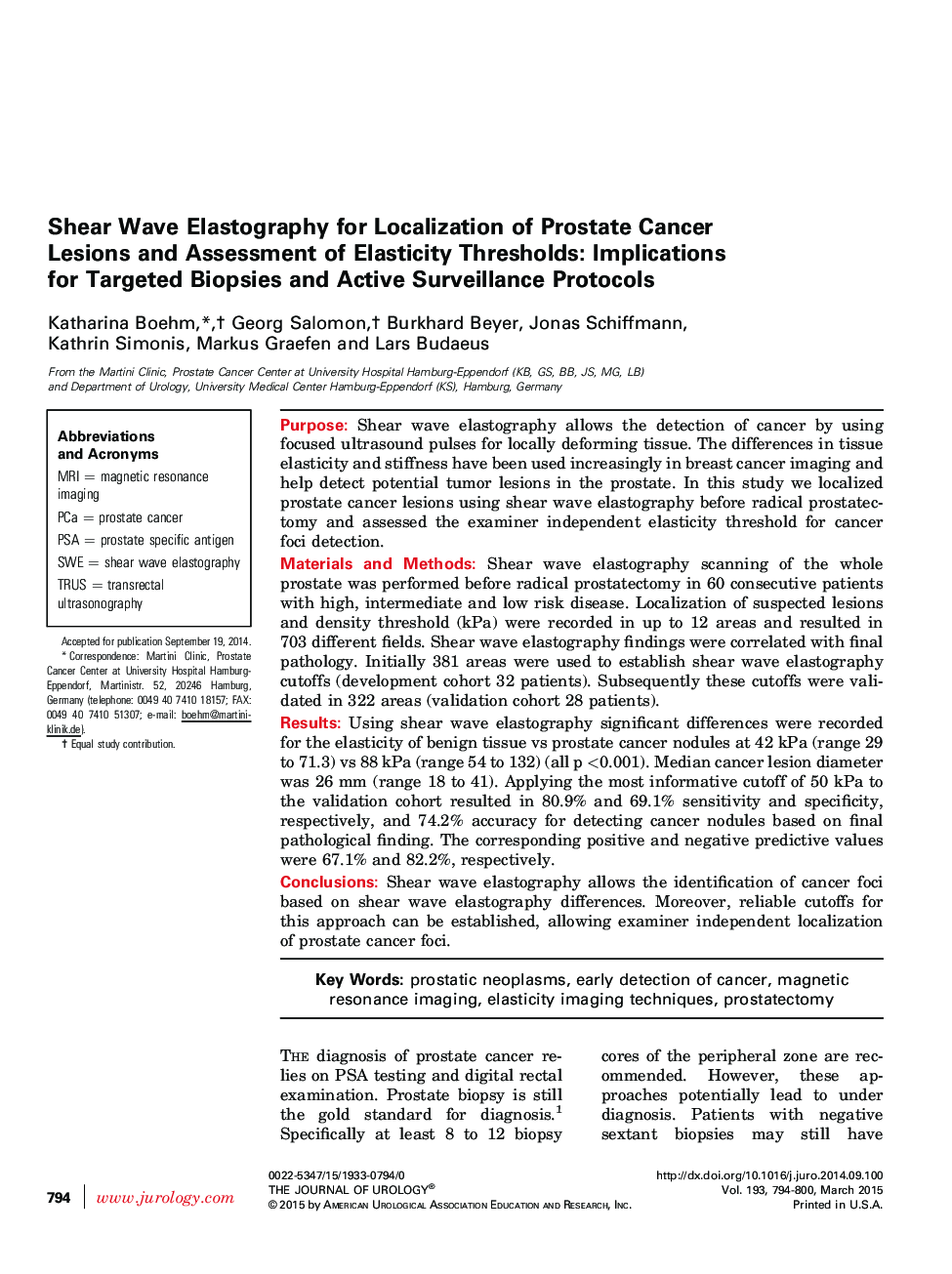| کد مقاله | کد نشریه | سال انتشار | مقاله انگلیسی | نسخه تمام متن |
|---|---|---|---|---|
| 3859421 | 1598894 | 2015 | 7 صفحه PDF | دانلود رایگان |
PurposeShear wave elastography allows the detection of cancer by using focused ultrasound pulses for locally deforming tissue. The differences in tissue elasticity and stiffness have been used increasingly in breast cancer imaging and help detect potential tumor lesions in the prostate. In this study we localized prostate cancer lesions using shear wave elastography before radical prostatectomy and assessed the examiner independent elasticity threshold for cancer foci detection.Materials and MethodsShear wave elastography scanning of the whole prostate was performed before radical prostatectomy in 60 consecutive patients with high, intermediate and low risk disease. Localization of suspected lesions and density threshold (kPa) were recorded in up to 12 areas and resulted in 703 different fields. Shear wave elastography findings were correlated with final pathology. Initially 381 areas were used to establish shear wave elastography cutoffs (development cohort 32 patients). Subsequently these cutoffs were validated in 322 areas (validation cohort 28 patients).ResultsUsing shear wave elastography significant differences were recorded for the elasticity of benign tissue vs prostate cancer nodules at 42 kPa (range 29 to 71.3) vs 88 kPa (range 54 to 132) (all p <0.001). Median cancer lesion diameter was 26 mm (range 18 to 41). Applying the most informative cutoff of 50 kPa to the validation cohort resulted in 80.9% and 69.1% sensitivity and specificity, respectively, and 74.2% accuracy for detecting cancer nodules based on final pathological finding. The corresponding positive and negative predictive values were 67.1% and 82.2%, respectively.ConclusionsShear wave elastography allows the identification of cancer foci based on shear wave elastography differences. Moreover, reliable cutoffs for this approach can be established, allowing examiner independent localization of prostate cancer foci.
Journal: The Journal of Urology - Volume 193, Issue 3, March 2015, Pages 794–800
